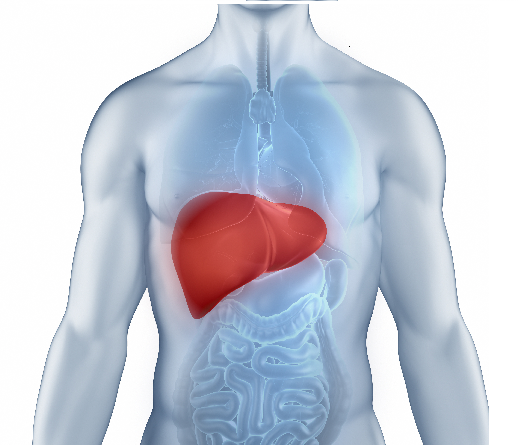Sickle Cell Disease – Symptoms, Diagnosis and Home Remedies
What is Sickle Cell Disease?
Sickle cell disease is a genetic disorder characterized by the production of abnormal hemoglobin, a protein responsible for carrying oxygen in the red blood cells. This inherited condition causes the red blood cells to become rigid and crescent-shaped, resembling a sickle, rather than their normal flexible disc-like shape.
The abnormal shape of the red blood cells leads to various complications. Sickle cells can get stuck in small blood vessels, causing blockages and reducing the flow of oxygen to different parts of the body.
 What causes Sickle Cell Disease?
What causes Sickle Cell Disease?
Sickle cell disease is caused by a mutation in the gene responsible for producing hemoglobin, a protein found in red blood cells that carries oxygen throughout the body.
What are the Symptoms of Sickle Cell Disease?
The symptoms of sickle cell disease can vary in severity and may differ from person to person. Some common symptoms of sickle cell disease include:
- Pain Crises: Sickle cells can block the flow of blood through the small blood vessels, causing episodes of severe pain known as pain crises. These crises can occur in various parts of the body, including the bones, chest, abdomen, and joints.
- Anemia: Sickle cell disease can lead to chronic anemia, where there is a shortage of healthy red blood cells in the body. Anemia can cause fatigue, weakness, and shortness of breath.
- Infections: People with sickle cell disease have a weakened immune system, making them more susceptible to infections such as pneumonia, urinary tract infections, and meningitis.
- Delayed Growth and Development: Chronic anemia and reduced oxygen supply to tissues can impact growth and development in children with sickle cell disease.
- Organ Damage: The blockage of blood vessels by sickle cells can cause damage to organs such as the spleen, kidneys, lungs, and liver. This can lead to various complications, including organ failure.
- Stroke: Sickle cells can block blood flow to the brain, increasing the risk of stroke, especially in children.
- Eye Problems: Sickle cell disease can cause damage to the blood vessels in the eyes, leading to vision problems and even blindness.
- Gallstones: The breakdown of red blood cells in sickle cell disease can result in the formation of gallstones, which can cause abdominal pain and require medical intervention.
How is Sickle cell disease diagnosed?
- Family History and Clinical Evaluation: A thorough examination of the patient’s medical history, along with physical symptoms and family history of sickle cell disease, can provide valuable clues for diagnosis.
- Newborn Screening: A blood sample is taken shortly after birth to check for the presence of abnormal hemoglobin.
- Hemoglobin Electrophoresis: It can distinguish between normal hemoglobin (HbA) and abnormal hemoglobin, such as hemoglobin S (HbS), which is associated with sickle cell disease.
- DNA Analysis: Genetic testing can be performed to identify specific mutations in the genes responsible for sickle cell disease.
How is Sickle Cell Disease Treated?
The treatment of sickle cell disease aims to manage symptoms, prevent complications, and improve the quality of life for individuals with the condition.
Here are some common treatments and interventions for sickle cell disease:
- Pain Management
- Hydroxyurea
- Blood Transfusions
- Antibiotics
- Vaccinations
- Folic Acid Supplementation
- Bone Marrow or Stem Cell Transplantation
Home Remedies to Manage Sickle Cell Disease
There is no cure for sickle cell disease, but there are certain home remedies and self-care practices that can help manage symptoms and improve the quality of life for individuals with the condition. It’s important to note that these home remedies should be used in consultation with healthcare professionals.
Here are some home remedies that may be helpful:
- Stay Hydrated: Drinking plenty of fluids, especially water helps to prevent dehydration, which can trigger sickle cell crises.
- Maintain a Healthy Diet: Foods high in nutrients like folic acid, vitamin B12, and iron are particularly beneficial for individuals with sickle cell disease to support red blood cell production and prevent anemia.
- Avoid Extreme Temperatures: Extreme heat or cold can trigger sickle cell crises. It’s important to dress appropriately for the weather, use appropriate heating or cooling methods, and avoid sudden temperature changes.
- Regular Exercise: Engaging in regular, moderate exercise can help improve blood circulation and overall health.
- Pain Management Techniques: Applying heat or cold packs to the affected area, taking warm baths, or practising relaxation techniques like deep breathing, meditation, or guided imagery may help manage pain during sickle cell crises.
- Prevent Infections: Maintaining good hygiene practices, washing hands frequently, and avoiding contact with individuals who have infections can help reduce the risk of infections, which can trigger sickle cell crises.













